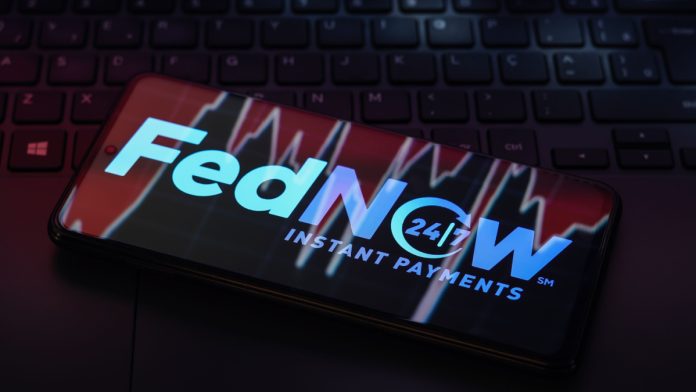With the Federal Reserve’s ‘FedNow’ service being live for just over a month now, more American enterprises and businesses abroad are applying for certification each day due to the system’s potential to transform the payments ecosystem in the US.
Payment Expert asked Miriam Sheril, Head of Product, US, at fintech Form3, to delve a little deeper into the rise in popularity of the new service and explain where it fits in the economic landscape.
Payment Expert: You recently received FedNow certification, could you talk us through the process and what value does it bring to your company?
Miriam Sheril: The certification is based on your organisation conducting enough tests in the certification environment to reflect that you can meet the needs of the right profile. For example, if you are certifying that you can receive payments you need to show and test with the Fed the ability to receive a pacs.008 (messaging format) and handle all the various responses you may need to be able to handle (accept it, reject it, accept without posting and follow up response).
The Fed does this to ensure that those who are signing up and those who are certifying as providers are providing a service that has been vetted. For Form3, that means we prioritised ensuring those tests could be passed and used as a starting point to build our own simulator, which goes well beyond the tests that are required to be certified. The goal being to enable customers to test their end-to-end processes holistically.
Form3 has successfully certified as both a send and receive provider for FedNow and we will add the LMT and RFP capabilities when we have a customer who is interested in those.
PE: In your view, how does FedNow measure as an alternative to the Real-Time Payment rail (RTP)?
MS: I think that FedNow is a great alternative and/or resiliency approach to RTP. This is no different than every other rail here in the U.S. Where you have Fedwire – you have CHIPS, where you have FedACH, you have EPN.
The two operators (The Federal Reserve and The Clearing House) are competitors, but they also sometimes meet different needs (Fed – ubiquity and reachability of all size banks, TCH – larger banks and the needs they have).
Beyond that, because of the size of our market, having two operators drives competition and fair pricing, etc. and lastly resiliency, which is so critical.
PE: From your perspective, what impact will FedNow have on the payments ecosystem in the US?
MS: While I think it will take a bit of time, FedNow will have a huge impact. The real-time period has arrived. Everyone expects everything instantly. Instant gratification is the new way of the world and payments are no different.
FedNow – with its existing connection to 9,000 banks – will drive adoption of instant payments, and we will see not just existing payment use cases migrate over but brand new ones. I predict we will see shifts from Wire, ACH, cards, check and cash. With those shifts we will see a net increase in payments at large, not a cannibalization of any one rail.
New business models will emerge that we never even thought of, based on the ability to move money instantly and at any time of the day/night/year – and in the future, cross-border instant payments is going to become the big discussion.
PE: Why is it so pivotal to be an early adopter of FedNow?
MS: To implement a new rail is no small task – from the technical implementation, the operational impacts, the exception processing, etc. There is a very unique opportunity right now with FedNow to do it while it is also a low-risk endeavour.
Right now, adoption is just starting, volumes will be low. You can implement something new, something modern, and “tinker” with it for a bit. This is a huge opportunity to not just do the same old thing as before and implement something that is outdated (albeit trusted) and try to build for the future, ultimately avoiding another big project to modernise a few years down the line. If you wait and you’re not an early adopter – then you’ll be rushing to implement something as you’ll be behind, and options will be limited.
The other aspect is – you don’t want to be behind. FedNow will grow its network and so the chicken and egg dance at some point soon will end. Once enough banks are on the network, businesses will start moving to banks that can offer them these instant 24/7 services so that they can innovate and grow their businesses.
Think about large real estate companies that have their eye on not worrying about “wire” cutoff times. As soon as the network is large enough that they can start having closings later or on weekends they are going to do it – and take the edge in their market/space.
They won’t hesitate to jump to a different bank if that bank can offer them those services and you can’t. Time is important. It might not feel like it’s too late now, but it will be too late before you know it – and these projects take time.

PE: What role does FedNow hold for fraud combatting and how does it change the climate for fraudulent activities?
MS: Fraud is a huge topic. It’s well known that instant payment rails around the globe have also driven some bigger fraud concerns. We are taking credit push transactions at low dollar value – 24/7 and making them irrevocable. It’s worrisome.
Fraud exists on all the rails, and there are tools and solutions being used to try and combat them. This will happen on FedNow as well. The Fed has also talked about looking into federal level fraud monitoring and controls that they will roll out as well. In their initial release they offer lower limits that can be set as well as negative lists (to block certain accounts) and they have communicated that they plan to do more as they roll out to more and more banks.
There is no easy answer or magic wand to this one, however. Fraud will always be a thing. And as much as we mitigate it, fraudsters will get smarter and find new ways. This will be a constant circle and battle just like on the other rails. The key to me is to have more collaboration in the industry – the more data everyone is willing to share with each other, the better our models combat it.
Form3 is looking at this from a Form3 network effect. As our banks and customers are willing to share with us the data on fraud activity, we are building a model that will help everyone on the network combat fraud without having to share the data with each other. In the US we hope to expand that and even strengthen that offering, which can support this new RTP/FedNow world.
PE: In a challenging economic climate, how vital are instant payments brought in by the FedNow?
MSl: It’s an interesting question. The reality is innovation never feels vital, does it? But then it very quickly becomes vital. Think about cell phones. Nobody felt it was vital. I remember thinking, why in the world would I constantly want a phone on me and to be reachable. And then boom – could anyone really survive today without a cell phone? Same for the internet.
So, do instant payments feel vital right now? Maybe not. (Although I would say I’m not quite sure how I would pay camp tips without the likes of Zelle and PayPal – I definitely don’t carry that amount of cash on me anymore!).
However, I predict within a few years it becomes table stakes, and no bank will really be able to last without it as an offering – their businesses and consumers will go to where they can easily access this functionality to enable their use cases.























